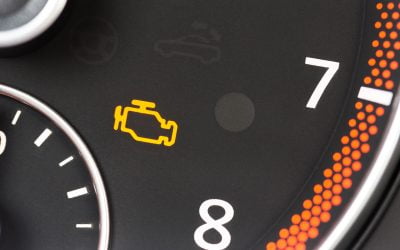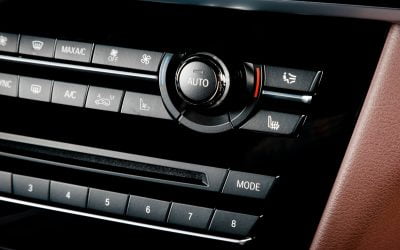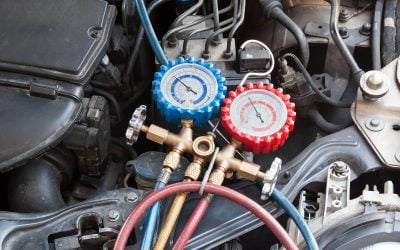4 Wheel Drive (4WD) versus All Wheel Drive (AWD)
What’s the difference between 4WD and AWD?
4WD and AWD are two different types of vehicle drivetrains. A drivetrain is an encompassing term for the different components used to send power from the engine to the wheels of your vehicle. A drivetrain will commonly include the transmission, driveshafts, differentials, axels and a number of other components used to drive the wheels.
Four wheel drive and all wheel drive systems may seem similar on the surface. They both work to deliver power to all four wheels and improve traction, when compared to a traditional two wheel drive system (such as front wheel drive or rear wheel drive). However, there are few key differences that separate 4WD and AWD systems. AWD systems are aimed at road driving vehicles to improve traction, safety and performance. Many different types of vehicles utilise an AWD system including SUV’s, sedans, coupes, sports cars and even rally cars. 4WD systems are a more specialised version of the AWD system, typically aimed at off-roading. Many 4WD systems provide additional features such as high and low gearing, better traction and stronger components. Most 4WD vehicles have increased ride height and larger dimensions, aiding off-road performance and providing additional space for camping or off-roading gear.
What are the features of a 4WD?
The 4WD system utilises a specialised component known as a transfer case. The transfer case connects to the output of the gearbox, splitting power to a front and rear differential via two driveshafts. The front and rear differentials split the power into two axles each, driving all four wheels. This 4WD system has been tested and proven as the strongest and most reliable way to deliver power to all four wheels. This system also provides better traction in rougher conditions. 4WD vehicles are also built to be more robust, making them a more suited choice for rugged and off-road terrain. Generally speaking AWD vehicles aren’t built to operate in challenging terrain and are likely to get stuck or damaged. A lot of 4WD systems offer both high and low ranges, selected by the driver with either an electronic switch or a floor-mounted mechanical lever. The low setting is ideal for off-road environments that require maximum traction and lower speeds (such as steep hill climbing), while the high setting is useful for general road driving or specific terrain such as loose sand or gravel.
4WD systems come in two different options; part time or full time. A full time 4WD system provides power to all four wheels on a continuous basis, with the driver being given the option to determine power distribution in most vehicles. A part time 4WD system only powers two wheels (usually the rear) until 4WD is needed. At that point, the driver can activate 4WD via a button or lever to power all four wheels.
4WD vehicles are often accessorised with a snorkel, winch and other specialised equipment to enable the vehicle to traverse a wide range of off-road locations. 4WD vehicles are often designed for maximum pulling power, making them great options for towing items such as boats, caravans or trailers.
What are the features of an AWD system?
An all wheel drive system works to power all four wheels of a vehicle, but not usually via a transfer case like a 4WD. Most AWD systems utilise a series of three differentials (front, rear and centre) to split power between the wheels. AWD systems are newer than 4WD systems, and exist in more varied makes and models; from commuter vehicles to luxury sports cars. AWD systems can’t be turned on or off by the user as you can in a 4WD. The AWD system is able to provide greater traction in a wider range of conditions when compared to a two wheel drive vehicle. However, AWD vehicles are not favoured by serious off-road drivers due to system reliability and important missing features. AWD vehicles often do not have the necessary clearance and toughened suspension found in 4WD vehicles, and may not even be aimed at off-roading. Many modern sports cars utilise AWD to provide better traction and improve acceleration.
Not all AWD systems are the same. Most AWD systems primarily power one set of wheels (front or rear) and send power to the other set when a loss of traction is detected. No extra step is needed to engage the additional two wheels as they are automatically engaged either mechanically or via the car’s computer.
Some vehicles operate both the rear and front wheels at all times, albeit usually at dynamically changing rates. This is usually the preferred method of AWD, however it is generally more expensive and complex. On dry roads this system allows for better handling, due to full power going onto the road from all wheels at all times. While in slippery conditions the four wheels being powered at all times produces better traction.
Which one is best for me?
If you need a vehicle that is able to handle rugged terrain, extreme conditions and perform laborious work on a day to day basis, the 4WD is the best choice for you. However, if you are just after a car that you drive day to day, but can still perform light off-roading (eg. on dirt and gravel roads where clearance and rugged suspension are not required), an AWD may be a good choice for you.
If you would like to learn more about the difference between AWD’s and 4WD’s, contact Australian Mechanical today.
Read More Posts
My Check Engine Light Is On, What Do I Do?
If you’re driving your car and the check engine light suddenly pops up, it can be a bit of a scary experience.
How We Test Your Car Air Conditioning For Leaks
We use environmentally friendly leak detection methods to find & fix air conditioning leaks.
How To Tell if Your Car Aircon Needs a Regas
Is your car’s air conditioner not as cold as it used to be? Learn how to tell if your car aircon needs a regas.
Call us on 07 3356 1538
Book your next service or repair today and experience our honest, knowledgeable and friendly service.



